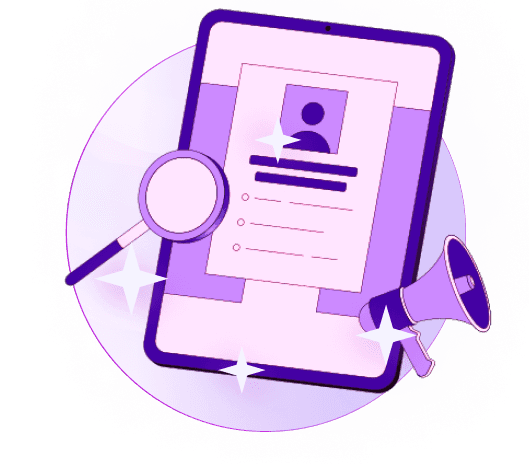Blogs
Articles

Data Enhancement vs Data Enrichment: Which Actually Works Better? [2025]
Data enhancement vs data enrichment confuses even experienced data professionals. The quality and accessibility of information determines a company's real power in our data-driven economy, not just the amount of data it has. These approaches serve different purposes though they both improve your data.
Database enrichment and data enhancement services require you to understand the differences between these strategies to make better decisions. We focused on improving the accuracy and consistency of existing datasets through data enhancement. This process fixes problems by adding or correcting information.
Data enrichment expands your database's depth and scope by bringing in new external information that provides deeper insights. Both data enhancement techniques and data enrichment processes play vital roles in our ever-changing digital world. Companies just need accurate and applicable information more than ever.
Let's break down the differences between data enhancement and enrichment. We'll explore their unique benefits and help you choose which approach—or combination of approaches—fits your specific needs best.
What Is Data Enrichment?
Data enrichment combines your first-party data with additional information from external sources or other internal systems. This process adds vital context that uncovers hidden insights and relationships in your existing dataset.
Data enrichment fills crucial gaps in your customer information. To cite an instance, your business might have simple transaction details but lack deeper context about customer priorities and behaviors. Businesses can add demographics, firmographics, or purchase propensities through enrichment that weren't captured before.
The enrichment process relies on three essential elements:
Verifying data to maintain accuracy and currency
Adding complementary details to existing information
Creating a detailed dataset by combining data from multiple sources
Raw data becomes a more complete and practical asset through this process. Companies regularly enrich various types of information such as demographic details, firmographic data (company size, revenue, industry), behavioral patterns, geographic insights, and technographic information.
Data enrichment forms the foundation of data integrity. It offers most important benefits: better customer segmentation, simplified sales processes, improved decision-making capabilities, and lower costs from poor-quality data. The enriched data gives customer-facing teams deeper context, which makes your information more valuable for strategic planning and operations.
What Is Data Enhancement?
Data enhancement differs from enrichment. It aims to refine and boost the quality of your existing data assets. Raw, chaotic information becomes well-laid-out and practical when you correct inaccuracies and fill in missing details.
Several key mechanisms make data enhancement work:
Data Updating: Refreshing outdated information like phone numbers and addresses
Data Appending: Adding missing details to create more complete records
Data Merging: Consolidating duplicate entries to eliminate redundancy
Data Cleaning: Removing erratic information such as incorrect contact details
A well-laid-out process guides data enhancement. You start by outlining marketing goals and identifying the data assets you need. Next comes finding the right data provider partner. You then compare internal records with external datasets. The final step adds new context to your existing records.
Data enhancement also creates consistent format standards. This makes datasets more valuable throughout operations. Financial services can turn confusing transaction strings like "XXXxX7629*AMA.COMUS/XXX-XX2745 CA" into simple descriptions like "Amazon.com".
Organizations end up with more accurate data and learn more about their customers. They target better and create more personal experiences. Quality information, not incomplete or inaccurate data, helps businesses make smarter decisions.
Data Enhancement vs. Data Enrichment Explained
Data enhancement and data enrichment might look alike, but they serve different purposes in the data management ecosystem. Their approaches to improving data assets set them apart.
A side-by-side comparison highlights their unique characteristics:
These processes work together perfectly. Enhancement creates a solid foundation by ensuring accuracy and reliability. Enrichment builds upon that foundation and adds depth with new layers of context.
Organizations get the best results when they use both strategies in sequence. They first enhance their data to meet quality standards, then enrich it with relevant information. This combined approach turns simple data into detailed strategic intelligence that helps make informed decisions in business functions of all types.
Which One Do You Need?
Your choice between data enhancement and enrichment should align with your business challenges and goals. Each plays a unique role in optimizing your data strategy.
When to use data enhancement:
Your database has gaps, outdated information, or inaccuracies
You must keep customer records current to comply with regulations
You need reliable data to run targeted marketing campaigns
Poor data quality affects your operational efficiency
You need to cut waste from communications sent to invalid addresses
When to use data enrichment:
You want to learn about customers through external data sources
You want to deliver more customized customer experiences
New markets require additional context for expansion
You must build detailed buyer personas or spot new opportunities
Your business needs unique data sources to stand out
The best approach combines both processes in sequence. Clean and standardize your existing data through enhancement first. This creates solid foundations. After your data meets quality standards, use enrichment to add depth and new points of view. This strategy makes your data accurate and complete, which maximizes its value for strategic decisions.
Note that using just one process will limit your data strategy. Enhancement and enrichment are crucial to stay competitive and understand market trends and customer behavior better.
Best Practices for Using Data Enrichment and Enhancement
Your business needs a well-planned approach to boost and enrich data effectively. The path to success starts when you set clear goals that line up with what your business wants to achieve. This first step makes sure your process adds real value to your organization.
Data enrichment works best as an ongoing effort because customer details change all the time. You need to pick data providers you can trust. Take time to review them based on how complete their data is, what samples they offer, and how easy they are to work with.
Clean your data thoroughly before enrichment to get rid of mistakes and useless information. Smart tech like machine learning can help automate tasks, boost accuracy, and make everything work better.
Your data's safety matters a lot. Use reliable security measures with proper encryption and good access controls to keep sensitive details safe. Keep an eye on how well things are working by checking match rates (aiming for >85% accuracy). This helps ensure your enrichment efforts pay off.
The enriched data should fit naturally into your current work process to stay useful. Good records of your data sources, enrichment methods, and decision-making are vital for audits and following rules.
Remember to verify your enriched data against trusted sources regularly. This keeps everything reliable and working as it should.
Key Differences Between Data Enhancement and Enrichment
The differences between data enhancement and enrichment play a vital role in creating effective data strategies. Organizations manage their information assets differently based on these unique approaches.
Source of Data: Internal vs External
Your dataset's enhancement works with internal sources to improve existing information. On the other hand, data enrichment adds new information from external third-party sources to your current records. This basic difference shapes each process's function and results.
Purpose and Outcome: Accuracy vs Context
Data enhancement focuses on making your accuracy and completeness better. This gives you reliable data that streamlines processes. Data enrichment adds new layers of context to help you understand and learn more about your data. You can make better decisions with this broader viewpoint.
Scope of Application: Fixing vs Expanding
Your existing data needs refinement through enhancement. This means fixing errors, making formats consistent, and removing duplicates. Think of it as polishing what you already have. Data enrichment takes things further by expanding beyond boundaries with fresh information. The result is a more detailed dataset.
Data Cleansing and Enrichment: Where They Overlap
These two processes work together even though they're different. Data cleansing stands as the first critical step before enrichment can work properly. Clean and standardized data creates a strong base for enrichment to add valuable new aspects. The best results come when organizations use both strategies one after another.
How To Enrich and Enhance Your Data?
A systematic approach makes data enhancement and enrichment work better. Your first step should be a full picture of your data to spot gaps, duplicates, and inconsistencies in your database. This vital first step helps avoid wasting resources on enriching outdated or irrelevant information.
Clean data comes first. Then you need clear enrichment goals - what do you want to learn? Next, identify the data points you need to reach these goals. Tools like OpenRefine or Tableau Prep clean and standardize information effectively. Enrichment platforms such as Clearbit or DataAxle add demographic and behavioral insights smoothly.
Here are the steps you need:
Create a process you can repeat - markets keep changing and data needs constant maintenance
Design expandable solutions that grow with your business needs
Connect your CRM for continuous data flow and automation
Update regularly since data decays about 70% each year
Track accuracy through metrics like email bounce rates
Companies looking to streamline both processes can use Persana. This platform offers integrated solutions that handle enhancement and enrichment efficiently. It automates complex tasks like cleaning, standardizing, and enriching data. This saves time while keeping data quality high.
Simplify Data Enrichment and Enhancement With Persana
Persana's unified AI-powered platform tackles both data enhancement and enrichment challenges effectively. The system runs continuously with support from 75+ data providers to automate research, outreach, and follow-ups.
Performance metrics show that Persana users cut their sales cycle time by 65% and boost conversion rates by 30%. The platform's AI agents help teams generate 95% more qualified leads while saving three weeks of manual scoring time each month.
Persana's email waterfall enrichment system stands out by querying multiple data providers sequentially until it finds verified contact information. This approach yields a 95% email discovery rate, which exceeds the combined match rates of Apollo and ZoomInfo.
Signal-based selling becomes easier as the platform tracks immediate changes in job transitions and company hiring trends. The system includes 30+ enrichment options with verified emails, technology stack insights, real-time news, and competitor analysis.
Persana delivers adaptable data management solutions with transparent pricing. All tiers come with unlimited users and core features. Advanced plans add CRM integration and intent tracking capabilities to streamline both enhancement and enrichment processes completely.
Conclusion
This piece explores how data enhancement and data enrichment each play unique roles in business intelligence. Yes, it is common to hear these terms used interchangeably when discussing data quality. However, they represent two different approaches with their own uses and advantages.
Data enhancement works from the inside out. It refines existing data by correcting errors, standardizing formats, and maintaining consistency. Data enrichment takes the opposite approach. It expands your dataset by adding external sources that provide more context to your existing information.
The best method depends on your business needs. Companies with data accuracy problems should focus on enhancement first. Organizations with clean data that need deeper customer insights will find enrichment strategies more valuable.
A combination of both methods works best. Start by enhancing your data to build a solid foundation. Next, add context from external sources through enrichment. This all-encompassing approach will give you data that stays accurate and meaningful.
The tools and processes for both enhancement and enrichment keep getting better. Platforms like Persana now blend both processes into one solution. This saves time and improves data quality efficiently.
Enhancement and enrichment are not competing approaches. They work together in the data management ecosystem. Combined, they change raw information into powerful business intelligence. This leads to smarter decisions, better customer experiences, and creates a competitive edge in today's data-driven market.
Key Takeaways
Understanding the distinction between data enhancement and enrichment is crucial for building an effective data strategy that drives business growth and decision-making.
• Data enhancement fixes existing data internally while data enrichment adds external context - enhancement polishes your foundation, enrichment expands your insights.
• Use enhancement first to clean and standardize data, then apply enrichment to add depth - this sequential approach maximizes data quality and business value.
• Enhancement focuses on accuracy and consistency of current records, while enrichment provides new external information for deeper customer understanding and market insights.
• Most successful organizations implement both processes together - enhancement ensures reliable data foundation, enrichment adds competitive intelligence for strategic advantage.
• Modern platforms like Persana automate both processes, achieving 95% email discovery rates and reducing sales cycles by 65% through integrated enhancement and enrichment.

Create Your Free Persana Account Today
Join 5000+ GTM leaders who are using Persana for their outbound needs.
How Persana increases your sales results
One of the most effective ways to ensure sales cycle consistency is by using AI-driven automation. A solution like Persana, and its AI SDR - Nia, helps you streamline significant parts of your sales process, including prospecting, outreach personalization, and follow-up.



